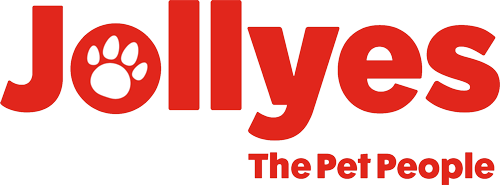Are you sure you want to delete this comment? It cannot be undone. |
Advertisement |
||||||||||||||||||||||||||||||||||||||||||||||||||||||
Suitable for all breeds of dogs
Click here for more info.
In general, unless your dog has health issues, you probably won't have to worry about these figures. Click here for more information
Mixing bowl composition
This is the ingredients list as printed on the packaging or manufacturer's website.
Think of the 'mixing bowl' composition like a recipe - all the ingredients you would need to put in a 'mixing bowl' in order to make the food.
Ingredients have to be listed in descending order of their weight so the higher it appears, the more there is.
Highlighted ingredients
Ingredients that we believe to be controversial or inferior are highlighted in yellow with particularly low grade, highly contentious or excessively vague ingredients in red.
As fed composition
While the 'mixing bowl' composition is useful for knowing what went into the food, it doesn't always reflect what your dog is actually eating. This is because the processes that turn the ingredients into the finished pet food can significantly alter the relative weights of the ingredients.
For this reason we've calculated the approximate 'as fed' percentages for the main ingredient categories in the finished product.
Please note that these figures are very approximate. They are estimates based on the information provided by the manufacturer in the ingredients list so the clearer the terminology and the more percentages they provide, the more accurate our estimates will be. Wherever information is lacking, we always assume the worst.
Ingredient categories
◉ Meat ingredients: includes all meat and fish ingredients except isolated fats/oils.
◉Added oils and fats: includes all isolated oil and fat ingredients.
◉ Carb-rich ingredients: includes all ingredients derived from grains, pseudo-grains, potatoes and other starchy root vegetables, sweet potato and legumes (except whole peas which are categorised under fruit and veg) except for isolated protein and extracted oils. Also includes fibre supplements.
◉ Fruit and veg: includes all whole vegetables and fruits.
◉ Other: all other ingredients. Mostly made up by nutritional supplements and additives.
For more information on any ingredient, please take a look at our Dog Food Ingredient Glossary
The dry matter level of a nutrient is the percentage there would be in the food if all of the water was removed.
With water taken out of the equation, these figures allow the nutrient levels of foods of different types (like wet and dry) to be compared on an even playing field.
|
kg
|
||
66.00 out of 100 - Good
Our unique product ratings are calculated based on a number of characteristics including the quality and quantity of the stated ingredients, certain nutritional and technological additives and the processing methods used to create the food. They are designed to indicate how beneficial we think a food is likely to be for the majority of dogs when fed on a daily basis for an extended period. Click here for more information
Country of origin:United Kingdom
A technological additive is any substance added to a pet food "for a technological purpose and which favourably affects the characteristics of feed".
The most common categories of technological additives include preservatives and antioxidants, gelling agents and thickeners and probiotics.
While the primary effects of technoloical additives are certainly 'favourable' (increased shelf life in the case of preservatives & antioxidants, better food texture and consistency in the case of gelling agents and thickeners etc.) some have been linked to health problems in pets and should be treated with caution.
Unfortunately, many technological additives do not have to be declared by the manufacturer so just because they do not appear on the label does not necessarily mean they are not in the food. If in doubt, ask the manufacturer directly exactly what technological additives their foods contain.



 United Kingdom
United Kingdom
 21
21
Taffy •4 months ago
My dog is 4 years old and weighs 10kg I feed him twice a day we are fairly new to this brand so I was wondering if how much wet food and how much dry food should he have each mealJoyce •6 months ago
Is the salmon with potalo Gluten free ?Alex Hunter •11 months ago
I was hopeful for this brand as it's a step up in quality in comparison to what I was feeding my girls before. Even though they both enjoy eating it, my little dog (mixed breed but I think has terrier in her) started having anal gland issues about 1 ½ months after starting on this. First her right anal gland got infected and ruptured, then a month later it happened to the left too. She's almost 4y and has never had these issues before. When I checked, it's only a 0.6% drop in fibre in comparison to her previous food. But enough to cause problems it seems. So I'm moving her onto Markus Mühle Black Angus as it has a whopping 6.7% fibre. Both of them, however, have developed dry, itchy and flaky skin within about 4 months of being on this. FYI: My other pooch (another mixed breed) is almost 9y and larger. Perhaps a kelpie mix. Hope this helps anyone looking.Romogape •one year ago
Been using this for a couple of months now and must say very pleased with it. Our two Staffy crosses can both be a bit picky and one seems to be a bit sensitive, both issues are OK. Both can also be a bit windy and the grain free version is a definite improvement over the standard version. Good value for money compared to similar quality foods.Sandwiches •2 years ago
My dogs just didn’t like this, my cavapoo is a fussy bugger anyway but the cocker wasn’t interested either. Thank fully Jolleys we’re happy to refund.slljarvis •2 years ago
The salmon and trout version of this is very appealing to my greyhound, I can use it as a treat. No gas and output is healthy too.